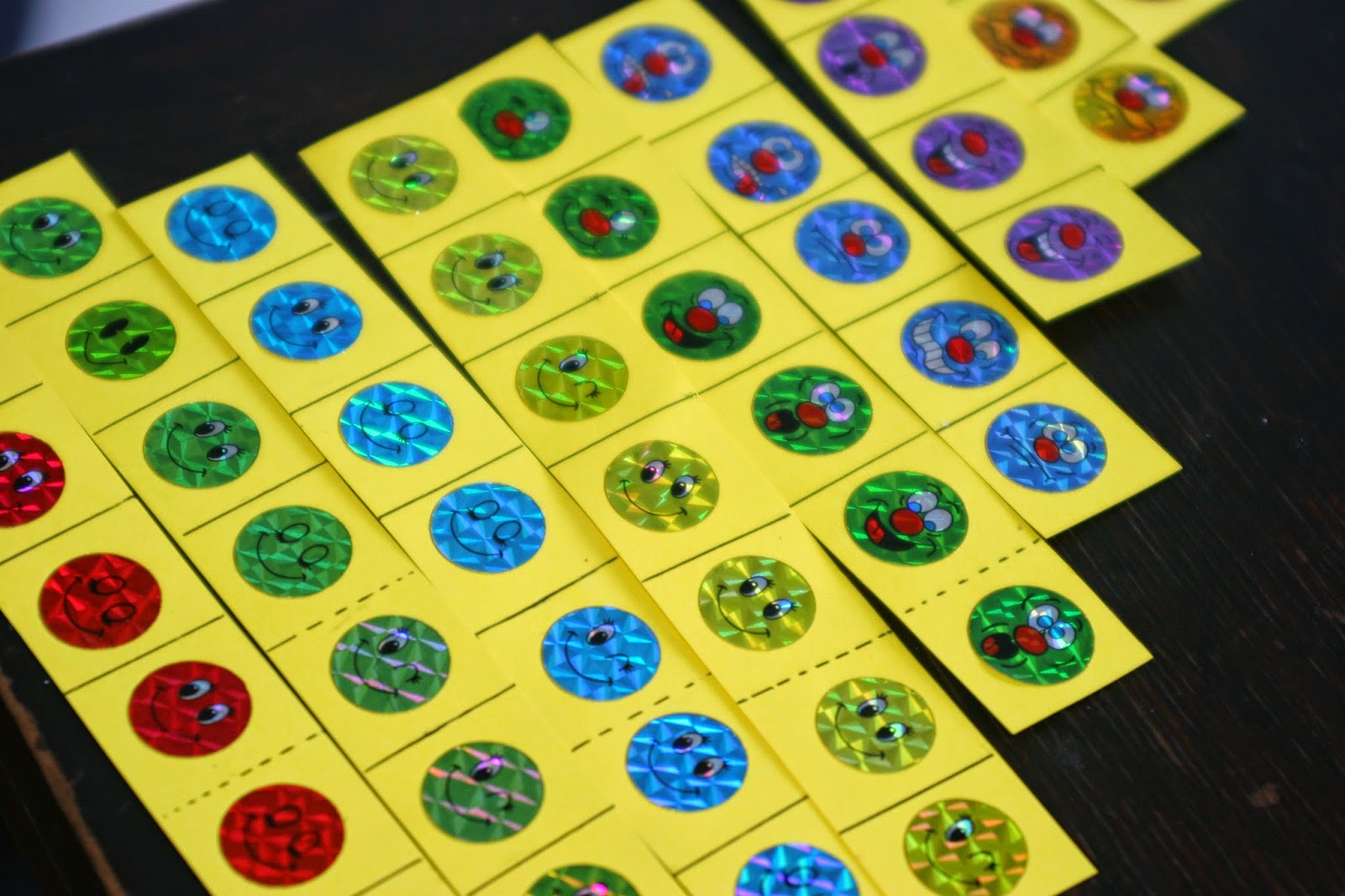Today T's lovely teacher gave me some animal strips to bring home to talk to him about. He's been off sick 2 days this week and when he went back yesterday he found his day a bit hard going. He was asked to draw the strips 1- 10 at school, something he found tricky at the time. She's super supportive and knows that I'm happy to follow up things at home with him, so I'll share what we did together.
Because it was after a day at school I thought I'd make it a bit easier to have him use stickers for this. I bought them at the 123 Mart. If you wanted to make these this too you would need to choose stickers carefully making sure that there were 10 of one type of sticker, 9 of another, 8 of another and so on. You could use any really, small animals, plain dots- whatever you find.
I cut yellow card into strips, each space is about 1.5cm square. There's a dotted line after 5 to help them learn what 5 looks like. In the following video they use a 1-10 strip, you could easily make one but we didn't- we
used the 10 strip at the top and made combinations of other strips underneath it 9+1, 8+2, 7+3 etc.
As you can see from the photos, he also liked making 1-10 'steps' : )
As you can see from the photos, he also liked making 1-10 'steps' : )
 |
| These are the original ( very cute) Animal strips we based ours on, available to buy at Every Educaid for $11.99 |
Here's a video that explains how to use them to help learn addition facts to 10
http://nzmaths.co.nz/sites/default/files/Animations/animal_strips3.swf
Here's a lesson copied from the NZ maths website.
In this session students are introduced to animal strips as a way to communicate addition equations.
- Show the students the animal strips. Ask the students: how many animals are on the strip? (6)
- Students should be able to recognise the patterns and answer instantly, rather than counting each animal. Show the students that the dotted line after the 5th animal can help them recognise the number.
- Show the students an animal strip. Ask the students: how many animals are on the strip? (7)
- Show the students another animal strip and ask the students: how many animals are there altogether?
- Encourage the students to count on. i.e. 8, 9.
- Write under the animal strip the number sentence” 7 and 2 makes 9”.
- Make copies of the animal strips and ask pairs or individual students to make their own addition equations. Encourage them to count on as they add the animals. Then ask the students to write the number sentence underneath.
- Give students animal strips appropriate for their knowledge stage, for example facts to 5, facts with 5, doubles, or facts to 10.




No comments:
Post a Comment